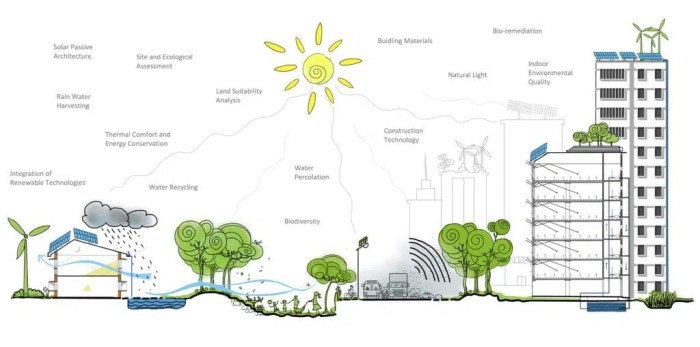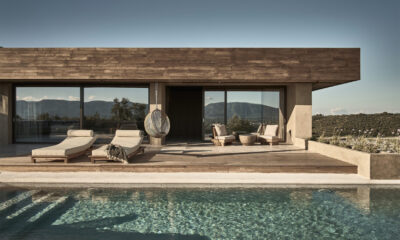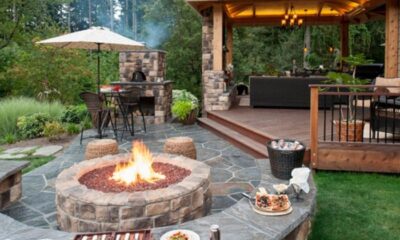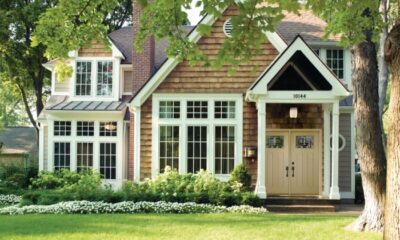Environmental Sustainability
Exploring How Olin Landscape Designs Integrate Sustainability

How Olin landscape designs integrate sustainability sets the stage for this enthralling narrative, offering readers a glimpse into a story that is rich in detail and brimming with originality from the outset.
As we delve deeper into the importance, principles, strategies, and case studies of sustainable landscape design, a fascinating world of creativity and environmental consciousness unfolds before us.
Importance of Integrating Sustainability in Landscape Design
Sustainability plays a crucial role in landscape design as it focuses on creating environmentally friendly and efficient outdoor spaces that minimize negative impacts on the ecosystem.
Examples of Sustainable Practices
- Using native plants in landscaping to reduce water consumption and maintenance needs.
- Implementing rain gardens to manage stormwater runoff and reduce pollution.
- Incorporating permeable paving materials to allow water to infiltrate the soil and prevent flooding.
- Installing energy-efficient outdoor lighting to reduce energy consumption.
Benefits of Incorporating Sustainable Elements
- Enhances biodiversity and supports local ecosystems.
- Reduces water usage and promotes water conservation.
- Improves air quality and reduces carbon footprint.
- Creates healthier and more enjoyable outdoor spaces for people to connect with nature.
Principles of Sustainable Landscape Design

Sustainable landscape design is guided by key principles that help create environmentally friendly landscapes and contribute to the overall sustainability of a design.
Efficient Water Use
One of the key principles of sustainable landscape design is efficient water use. This involves implementing strategies such as rainwater harvesting, drip irrigation systems, and selecting drought-resistant plants to minimize water consumption and reduce water waste.
Native Plant Selection
Choosing native plants for landscaping helps reduce the need for excessive watering, fertilizers, and pesticides. Native plants are adapted to the local climate and soil conditions, making them more resilient and low-maintenance, which contributes to a healthier ecosystem.
Minimizing Waste
Sustainable landscape design focuses on minimizing waste by using recycled materials, composting organic matter, and reducing the use of chemicals. This principle aims to create landscapes that are not only aesthetically pleasing but also environmentally responsible.
Biodiversity Conservation
Another important principle is biodiversity conservation, which involves creating habitats for wildlife, promoting pollinators, and preserving natural ecosystems within the landscape design. By enhancing biodiversity, sustainable landscapes support the health and balance of local ecosystems.
Energy Efficiency
Designing landscapes with energy efficiency in mind can help reduce the need for artificial lighting, heating, and cooling. By incorporating elements such as shade trees, green roofs, and strategic placement of hardscapes, sustainable landscape design can lower energy consumption and minimize environmental impact.
Strategies for Integrating Sustainability in Landscape Designs
Integrating sustainability in landscape designs goes beyond using eco-friendly materials
Incorporating Sustainable Materials
- Use reclaimed wood or recycled plastic for decking and furniture to minimize the demand for new resources.
- Opt for permeable paving materials like gravel or permeable concrete to reduce stormwater runoff and replenish groundwater.
- Choose native plants that require less water and maintenance, promoting biodiversity and reducing the need for chemical inputs.
Energy-Efficient Solutions for Lighting and Irrigation
- Install LED lighting fixtures that consume less energy and have a longer lifespan compared to traditional lighting options.
- Incorporate solar-powered lighting systems to harness renewable energy and reduce electricity consumption.
- Utilize smart irrigation systems with sensors to optimize water usage based on weather conditions and plant needs, minimizing water waste.
Water Conservation Strategies
- Implement rainwater harvesting systems to collect and store rainwater for landscape irrigation, reducing reliance on potable water sources.
- Design landscapes with natural water retention features like swales and rain gardens to slow down runoff and allow water to infiltrate the soil.
- Use drip irrigation systems instead of traditional sprinklers to deliver water directly to plant roots, minimizing evaporation and runoff.
Case Studies of Successful Sustainable Landscape Designs
There are several projects that have successfully integrated sustainability into landscape design, showcasing the positive impacts on the environment and communities.
1. The High Line, New York City
The High Line is a prime example of repurposing existing infrastructure to create a sustainable urban oasis. This elevated park was built on a disused railway line, reducing urban heat island effect, increasing biodiversity, and providing a recreational space for the community.
2. The Singapore Botanic Gardens
The Singapore Botanic Gardens is a UNESCO World Heritage Site known for its sustainable landscape design. The gardens utilize innovative water management systems, green roofs, and native plant species to conserve resources and create a vibrant green space in the heart of the city.
3. The Bosco Verticale, Milan
The Bosco Verticale, or Vertical Forest, in Milan consists of two residential towers covered in trees and plants. This project helps reduce air pollution, regulate temperature, and provide habitats for wildlife in an urban setting, showcasing the potential of sustainable high-rise design.
Final Review
In conclusion, the seamless integration of sustainability into Olin landscape designs not only showcases innovative solutions but also highlights the profound impact that conscious design choices can have on our environment and communities.
Common Queries
How can sustainable materials be incorporated into Olin landscape projects?
Sustainable materials can be integrated by using recycled products, locally sourced materials, and environmentally friendly options.
What are some energy-efficient solutions for landscape lighting in sustainable designs?
LED lighting, solar-powered fixtures, and motion-sensor lights are great options for energy-efficient landscape lighting.
How do water conservation strategies play a role in sustainable landscape designs?
Water conservation strategies such as rainwater harvesting, drip irrigation, and drought-resistant plants help minimize water usage in sustainable landscape designs.
-

 General6 months ago
General6 months agoSmall Home Renovation Ideas: 5 Creative Ways to Maximize Space
-

 General8 months ago
General8 months agoAI-powered lifestyle design tools for home planning: Revolutionizing Efficiency and Customization
-

 General8 months ago
General8 months agoCaptivating Title: Interior and Exterior Design Ideas for Wellness Retreats
-

 General6 months ago
General6 months agoCaptivating Fire Pit Patio Design Ideas to Transform Your Outdoor Space
-

 General6 months ago
General6 months agoThe Ultimate Guide to the Best Architectural Rendering Services for High-End Real Estate
-

 General7 months ago
General7 months agoEco-Friendly House Paint Options: A Guide to Sustainable Painting Choices
-

 General7 months ago
General7 months agoCrafting Energy Efficient Home Exteriors: A Guide to Sustainability
-

 General7 months ago
General7 months agoCrafting a Timeless Aura: Unveiling the Magic of Scandinavian Interior Design





